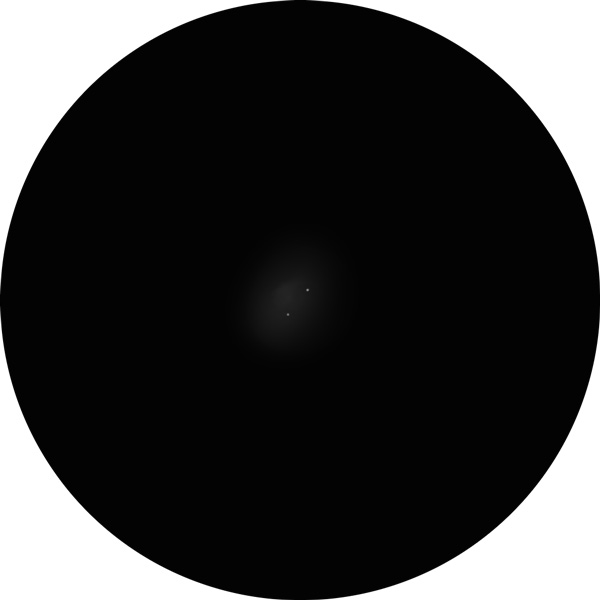Messier 78, also known as Casper the Friendly Ghost Nebula, is a reflection nebula in the constellation Orion. It is best viewed in winter.
A reflection nebula is a cloud of cosmic dust illuminated by a nearby star or stars. For a mental picture, think of heavy fog floating around a streetlight on a dark night. You see the fog because the lamplight hits it.
In the case of M78, we are viewing starlight lighting up cosmic dust 1,600 light-years away. Unfortunately, suburban light pollution makes it tougher to see M 78’s faint nebulosity. Give 15-30 minutes to let your eyes adapt to the dark before heading over to M78, so it will make it easier to view the object.
On that note, backyard astronomers may only notice two 10th-magnitude stars in the eyepiece if light pollution is bad. In reality, surrounding these stars is a hazy, faint patch of light. This is the interstellar dust illuminated by the two stars. See my observation below on how I confirmed I was looking at M78.
Historically speaking, the French astronomer Pierre Méchain recorded the first known observations of M78 in 1780. Later that same year, Charles Messier cataloged the target, thus classifying it as Messier 78.
My Observations
| Date | January 27, 2022 |
| Time | 8:20 p.m. |
| Location | Seattle, WA |
| Magnification | 127x |
| Scope | Meade 8″ SCT |
| Eyepiece | 16mm |
| Seeing | Fair |
| Transparency | Fair |

is dim due to light pollution.
I was expecting M78 to be brighter. A few minutes ago, when I found the object, I thought my coordinates were incorrect, as no hazy patch appeared in the region. Instead, only two dim stars were found. Once I manually slewed the scope left/right and up/down, I noticed a faint contrast between the light-polluted sky and the slightly brighter light around the two stars. I realized then that I had a nebula in the eyepiece.
Right now, I’ve placed my UHF light pollution filter on, so I have a little better contrast around the edges of the hazy patch. I’m struggling with this object because of several factors: The weather is humid (32F at 100% humidity). Plus, a light haze (must be fog or fireplace smoke from next door) is floating around the streetlamp near me. I hope to return to this object from darker skies as I’m sure the nebula will look better.

Key Stats
| Constellation | Orion |
| Best Viewing | Winter |
| Visual Magnitude | +8.3 |
| Absolute Magnitude | -0.15 |
| Distance from Earth | 1,600 ly |
| Diameter | 3.7 ly |
| Apparent Size | 8 x 6 arcmin |
| Milky Way Location | Orion Spur |
| My Viewing Grade | B- |
Historical Observations
December 17, 1780 observation by Charles Messier
“Cluster of stars, with much nebulosity in Orion & on the same parallel as the star Delta in the belt, which has served to determine its position…M. Méchain had seen this cluster at the beginning of 1780, & reported: ‘On the left side of Orion; 2 to 3 minutes in diameter, one can see two fairly bright nuclei, surrounded by nebulosity”
December 19, 1783 observation by William Herschel. Like me, he mentions that he needs a better night of viewing to confirm the parts he’s seeing.
Two large [bright] stars, well defined, within a nebulous glare of light resembling that in Orion’s sword. There are also three very small [faint] stars just visible in the nebulous part which seem to be component particles thereof. I think there is a faint ray near 1/2 deg long towards the east and another towards the south east less extended, but I am not quite so well assured of the reality of these latter phenomena as I could wish, and would rather ascribe them to some deception. At least I shall suspend my judgement till I have seen it again in very fine weather, tho’ the night is far from bad.“
Sources and Notes
M78 banner photo by ESO/Igor Chekalin at http://www.eso.org/public/images/eso1105a/ and used per the Creative Commons Attribution 4.0 International License.
Charles Messier Observations: SEDS Messier Database
AKA: Messier 78, m78, M 78, NGC 2068, Orion B Molecular Cloud Complex
